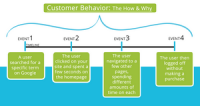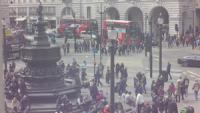-
Private Surveillance Is a Lethal Weapon Anybody Can Buy
High-tech surveillance technology, once the purview of sophisticated spy services in wealthy countries, is now being offered by private contractors around the world as part of a highly secretive multibillion-dollar industry. While other kinds of weapons are subjected to stringent international regimes and norms — even if these are often broken — the trade in spy technology is barely regulated.
-
-
Mass surveillance is coming to a city near you
The tech entrepreneur Ross McNutt wants to spend three years recording outdoor human movements in a major U.S. city, KMOX news radio reports. Conor Friedersdorf writes in The Atlantic that if that sounds too dystopian to be real, you’re behind the times. McNutt, who runs Persistent Surveillance Systems, was inspired by his stint in the Air Force tracking Iraqi insurgents. He tested mass-surveillance technology over Compton, California, in 2012. In 2016, the company flew over Baltimore, feeding information to police for months (without telling city leaders or residents) while demonstrating how the technology works to the FBI and Secret Service.
-
-
Dystopian Future Watch: Is San Francisco’s facial recognition ban too little, too late?
Life just keeps creeping along, leading us step-by-step closer to living in a Philip K. Dick dystopian future—in real-time. And often, in our surveillance culture, we are willing participants to work alongside Big Brother. Harmon Leon writes in the Observer that Remember how fun it used to be to see facial recognition and retina scanning in sci-fi movies? We loved it in RoboCop and Blade Runner, right? Now, many of these biometrictechnologies have become a nightmarish reality.
-
-
WhatsApp's loophole reveals role of private companies in cyber-surveillance
Last month, WhatsApp’s latest security flaw was discovered, a flaw which allow governments to spy on dissidents, activists, and journalists. An Israeli cyber company is reportedly behind the loophole — and not for the first time.
-
-
Big tech surveillance could damage democracy

Data is often called the oil of the 21st century. The more tech companies know about their users, the more effectively they can direct them to goods and services that they are likely to buy. The more companies know about their users, the more competitive they are in the market. But this business model – what I consider spying machines – has enormous potential to violate civil liberties. Big tech is already being used abroad to enhance the power of repressive regimes, as my work and others’ has shown.
-
-
Silicon Valley’s scramble for China
In August 2012, China launched one of its first major “smart city” projects for the remote oil town of Karamay in the autonomous province of Xinjiang. “Information technology is not just about technology. It should be integrated with all aspects of life in our city and make people’s lives more convenient,” said then Karamay Mayor Chen Xinfa. Nafeez Ahmed writes in Coda Story that A report released last year by subsidiary Deloitte China, titled “Super Smart City: Happier Society with Higher Quality,” celebrates China’s drive to build “super smart cities” which integrate data across services like health care, transport, education and public safety. Billed by Deloitte as a virtual utopia, China’s smart cities represent the biggest and most intrusive surveillance architecture ever built by any single nation, according to experts and analysts.
-
-
San Bernardino Court asked to review cell-site simulator, digital search warrants likely improperly sealed
Since the California legislature passed a 2015 law requiring cops to get a search warrant before probing our devices, rifling through our online accounts, or tracking our phones, EFF has been on a quest to examine court filings to determine whether law enforcement agencies are following the new rules.
-
-
China’s Orwellian war on religion
China is experimenting with Orwellian surveillance technology, including the Ministry of Public Security’s mass surveillance system and a “Social Credit System” that can create a blacklist for those who don’t pay debts or who cheat on taxes, break traffic rules or attend an unofficial church. Nicholas Kristof writes in the New York Times that blacklisted individuals can be barred from buying plane or train tickets: Although the system is still being tested in different ways at the local level, last year it barred people 17.5 million times from purchasing air tickets, the government reported. It could also be used to deny people promotions or assign a ring tone to their phone warning callers that they are untrustworthy.
-
-
Dystopian Future Watch: Is San Francisco’s facial recognition ban too little, too late?
Life just keeps creeping along, leading us step-by-step closer to living in a Philip K. Dick dystopian future—in real-time. And often, in our surveillance culture, we are willing participants to work alongside Big Brother. “Remember how fun it used to be to see facial recognition and retina scanning in sci-fi movies?” Hermon Leon asks in the Observer. “We loved it in RoboCop and Blade Runner, right? Now, many of these biometric technologies have become a nightmarish reality. Let’s take a look.”
-
-
Analytic superiority, public-private cooperation and the future of U.S. foreign intelligence
After years of focusing on counterterrorism, a mainly kinetic threat, the U.S. intelligence community must now adapt to a long-term cyber struggle with nation-state adversaries. This struggle includes election interference and other socio-political disruption, cyber sabotage, theft of secrets, and competition in emerging technologies such as quantum computing and 5G wireless communications. David Kris writes in Lawfare that to succeed against these threats, the intelligence community must shift its approach in two related ways. First, it must focus on analytic superiority as well as cryptographic superiority—terms that I explain below but that basically require a shift in emphasis from accessing data to managing and using data. Second, to achieve analytic superiority, the intelligence community must develop stronger partnerships with the private sector and academia, and a broader base of external support with the American people.
-
-
How artificial intelligence systems could threaten democracy

U.S. technology giant Microsoft has teamed up with a Chinese military university to develop artificial intelligence systems that could potentially enhance government surveillance and censorship capabilities. The advent of digital repression is profoundly affecting the relationship between citizen and state. New technologies are arming governments with unprecedented capabilities to monitor, track and surveil individual people. Even governments in democracies with strong traditions of rule of law find themselves tempted to abuse these new abilities.
-
-
Detecting, analyzing suspicious activity in surveillance footage

Traditional surveillance cameras do not always detect suspicious activities or objects in a timely manner. Researchers developed a hybrid lightweight tracking algorithm known as Kerman (Kernelized Kalman filter).
-
-
Satellite technology detects, and may prevent, genocide
Many of the world’s worst human rights abuses, including genocides, occur in areas that are difficult to observe. “Smallsat” — short for small satellite — technology can detect human rights abuses and violations. The information collected by this technology provides evidence that can be used to corroborate refugee accounts of atrocities in international courts.
-
-
U.S. intel chiefs warn Washington risks losing friends, influence
U.S. intelligence chiefs are sounding alarms about an ever more perilous future for the United States, one in which the country is in danger of seeing its influence wane, its allies waiver, and key adversaries team up to erode norms that once kept the country safe and the world more stable. “It is increasingly a challenge to prioritize which threats are of greatest importance,” Dan Coats, Director of National Intelligence, said, sharing testimony that often and repeatedly contradicted past assertions by President Donald Trump. “During my tenure as DNI now two years and I have told our workforce over and over that our mission was to seek the truth and speak the truth,” Coats pointedly stated. Driving many of the concerns, according to intelligence officials, is a growing alliance between Russia and China competing against the U.S. not just for military and technological superiority, but for global influence.
-
-
A note on FISA “verification”
Last week, former FBI Director James Comey testified before the House Judiciary and Oversight Committees in closed session. When, at Comey’s request, a transcript was released shortly thereafter, mainstream news outlets mostly yawned, but numerous pro-Trump outlets had a different reaction, seizing on Comey’s acknowledgement that the now-notorious “Steele Dossier” was still in the process of being vetted when Comey left in the Bureau. Julian Sanchez writes in Just Security that this provided those who want to protect Trump from the Muller investigation an opportunity to revive a complaint about purported improprieties in the application for a FISA order to intercept the communications of erstwhile Trump campaign advisor Carter Page: The information provided in FISA applications must be “verified” before it is submitted to the Foreign Intelligence Surveillance Court, and here we have (the objection runs) an apparent admission that the information was not verified! But if the objection to using the material in the Steel Dossier is procedural—an argument that the FBI violated its own requirements—then the complaint is simply wrong, and based on a basic confusion about what FISA “verification” means.
-
- All
- Regional
- Water
- Biometrics
- Borders/Immig
- Business
- Cybersecurity
- Detection
- Disasters
- Government
- Infrastructure
- International
- Public health
- Public Safety
- Communication interoperabillity
- Emergency services
- Emergency medical services
- Fire
- First response
- IEDs
- Law Enforcement
- Law Enforcement Technology
- Military technology
- Nonlethal weapons
- Nuclear weapons
- Personal protection equipment
- Police
- Notification /alert systems
- Situational awareness
- Weapons systems
- Sci-Tech
- Sector Reports
- Surveillance
- Transportation
Advertising & Marketing: advertise@newswirepubs.com
Editorial: editor@newswirepubs.com
General: info@newswirepubs.com
2010-2011 © News Wire Publications, LLC News Wire Publications, LLC
220 Old Country Road | Suite 200 | Mineola | New York | 11501
Permissions and Policies
Editorial: editor@newswirepubs.com
General: info@newswirepubs.com
2010-2011 © News Wire Publications, LLC News Wire Publications, LLC
220 Old Country Road | Suite 200 | Mineola | New York | 11501
Permissions and Policies
